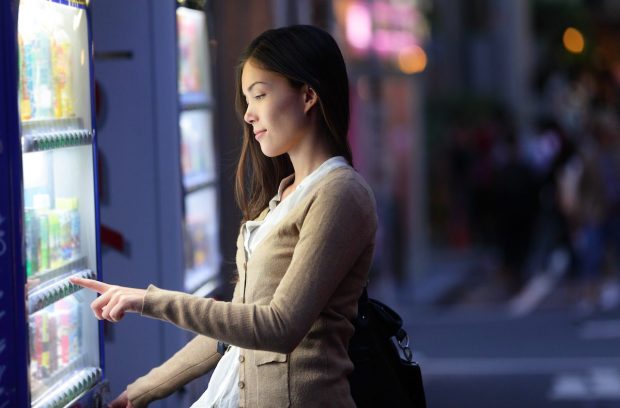Rise of Mobile Ordering Sets Stage for Vending Machine Boom

With diners more accustomed than ever to grab-and-go options, next-generation vending machines are catching on.
Shriya Gupta, CEO of Toronto-based vending machine artificial intelligence (AI) provider Daily Blends, which announced this week the close of a $2 million fundraise, discussed the opportunity that the rise of mobile ordering poses for vending machine owners, enabling them to capture occasions that would once have gone to costly-to-operate traditional restaurants.
“Where mobile ordering is available, it’s been, like, a 50/50 split [between own-device and vending machine purchases],” Gupta said. “A lot of people are using the app to track which fridge they want to go to and reserve a meal in advance. They’re participating in the loyalty program.”
Indeed, many consumers are open to ordering cooked meals via vending machines, and advancements in AI technology can help ensure the machines meet diners’ expectations. Gupta noted that the insights the company’s data has yielded can be surprising. For instance, at Union Station in Toronto, two machines placed about 1,000 feet apart are used very differently. At one, consumers tend to opt for smaller items, such as chia pudding, and at the other, they go for full meals, such as jerk chicken.
“Understanding these different tastes helps us make very accurate restocking efficiencies, getting them to the tee and minimizing cost, minimizing food waste,” Gupta noted.
Overall, the market is there, with the majority of consumers looking for digitally powered off-premise food options. Research from PYMNTS’ study “12 Months of the ConnectedEconomy™: 33,000 Consumers on Digital’s Role in Their Everyday Lives,” which drew from a survey of tens of thousands of U.S. consumers, noted that 56% of consumers purchased restaurant meals for pickup or delivery in November.
“The demand for these grab-and-go formats has gone through the roof,” said Gupta. “People are really looking for healthy and affordable meals on the go.”
The move comes as the traditional food service model faces new margin pressure from rising prices, making it harder to afford the cost of running a fully staffed restaurant, and these challenges are affecting the customer experience.
Research from PYMNTS’ study “The 2022 Restaurant Digital Divide: Restaurant Customers React to Rising Costs, Declining Service,” which drew from a survey of more than 2,300 U.S. restaurant customers in November, found that half of them have seen restaurants cutting hours or closing dining rooms. Plus, 27% of diners reported noticing a lower quality of service.
Certainly, there has been innovation in the vending machine space in recent years. For example, Tortoise, a company that once focused on providing robotic solutions for last-mile delivery for grocery and general retail, announced last year that it was turning its focus to providing automated mobile shops — effectively roving vending machines.
Additionally, in an effort to revive its vending machine industry, some providers in Japan have recently been trying out options to purchase high-end foods, such as wagyu beef, sashimi and caviar via the channel. Consumers purchase these foods in frozen or chilled form to be heated up at home.
Amanda Tsung, chief operating officer of Yo-Kai Express, an autonomous restaurant company with locations in the U.S., Japan and Taiwan, noted in an interview with PYMNTS last year that the vending machine model creates sales opportunities at times when it would otherwise be difficult to meet demand.
“In America, … things close relatively early, and to get anything remotely delicious is very difficult in the middle of the night, so I think that we … complement [existing] restaurants quite well,” Tsung said at the time.
